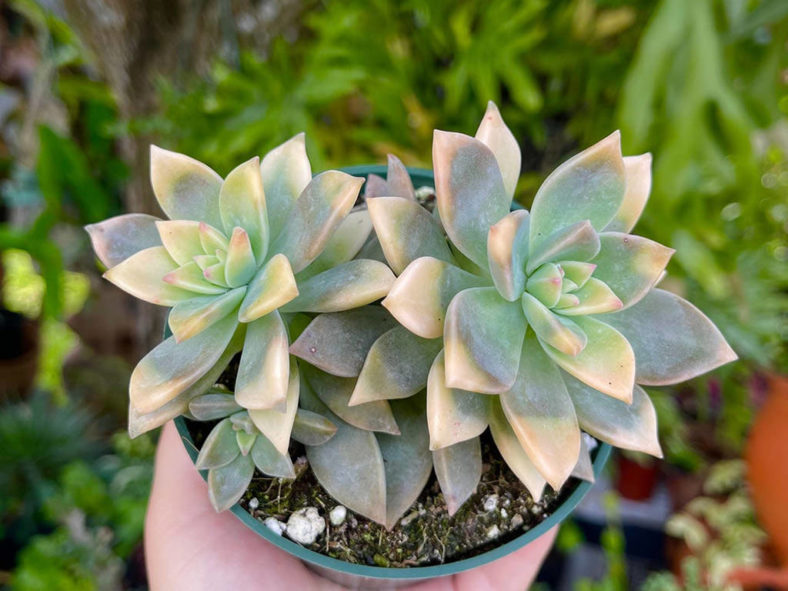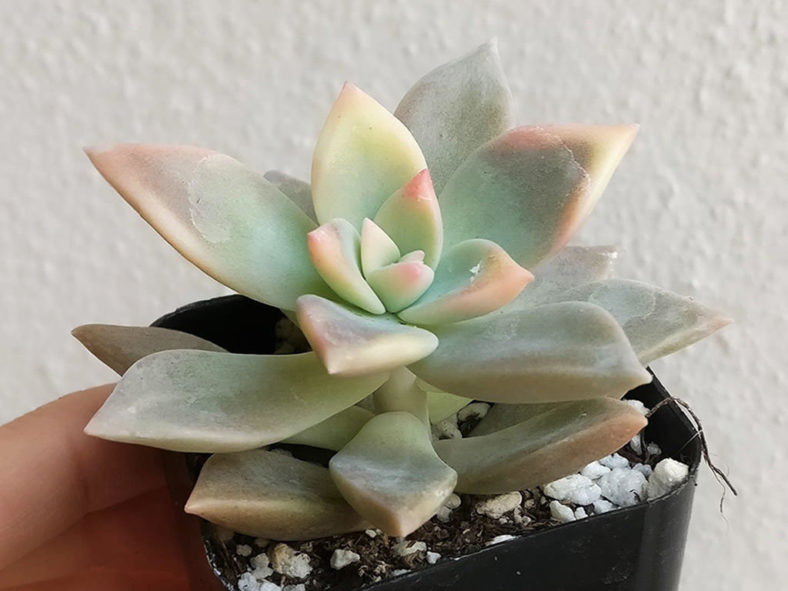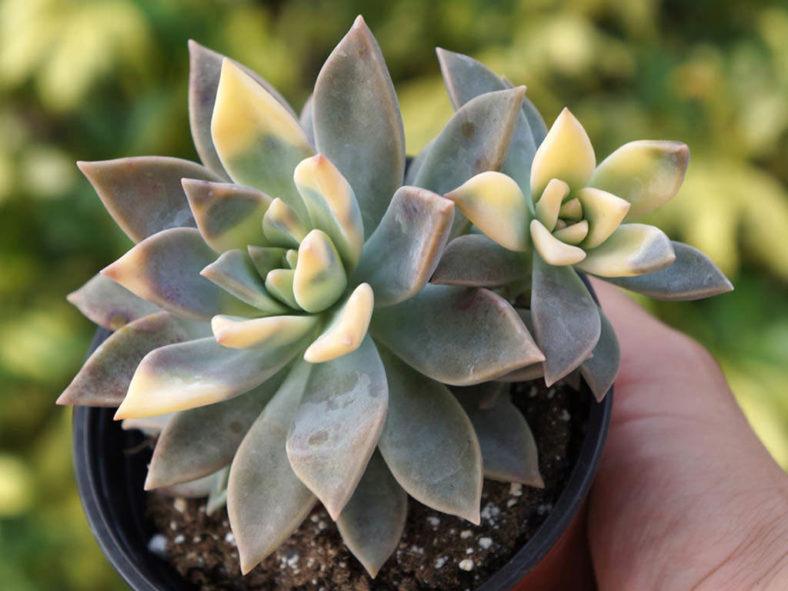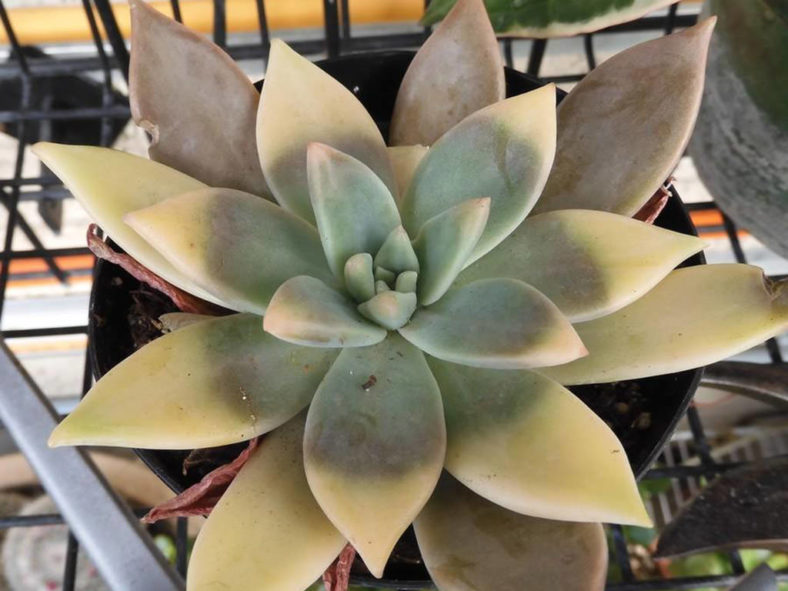Scientific Name
Graptopetalum paraguayense 'Variegatum'
Accepted Scientific Name
Graptopetalum paraguayense (N.E.Br.) E.Walther
Common Name(s)
Ghost Plant
Synonym(s)
Graptopetalum paraguayense f. variegatum
Scientific Classification
Family: Crassulaceae
Subfamily: Sedoideae
Tribe: Sedeae
Subtribe: Sedinae
Genus: Graptopetalum
Description
Graptopetalum paraguayense 'Variegatum' is a beautiful succulent that forms rosettes of bluish-gray leaves with a some pink to light purple hue and irregular cream or pinkish-yellow markings. The rosettes grow at the tips of ever-lengthening stems that become pendent over time. The leaves are fleshy, flat, and pointed. The amount of variegation varies from rosette to rosette.
In spring, the plant produces white star-shaped flowers with tiny red specks.

Hardiness
USDA hardiness zones 9a to 11b: from 20 °F (−6.7 °C) to 50 °F (+10 °C).
How to Grow and Care
When planting your Ghost Plant in a container, choose a well-drained potting mix and a container with drainage holes.
Try mixing Ghost Plant with other succulents for an interesting yet low-maintenance planting. Or you can incorporate your Ghost Plant into a rock garden. You can create a rock garden by piling large rocks like limestone as the base and filling in gaps with smaller stones, gravel, and soil pockets for planting.
Ghost Plant thrives in sunlight, so choose a location to receive full- or half-day sun. When grown as a houseplant, keep it near a sunny window.
Some prefer to keep their Ghost Plant trimmed to create a fuller shape. For a different look, you can allow it to get a little "leggy." This allows the twisting stems to climb out of the pot, cascading down gently. Be sure to let the soil almost completely dry between waterings.
Learn more at How to Grow and Care for Graptopetalum.
Origin
Graptopetalum paraguayense 'Variegatum' is a form of Graptopetalum paraguayense selected for its variegated foliage.
Links
- Back to genus Graptopetalum
- Succupedia: Browse succulents by Scientific Name, Common Name, Genus, Family, USDA Hardiness Zone, Origin, or cacti by Genus
Photo Gallery
Click on a photo to see a larger version.



